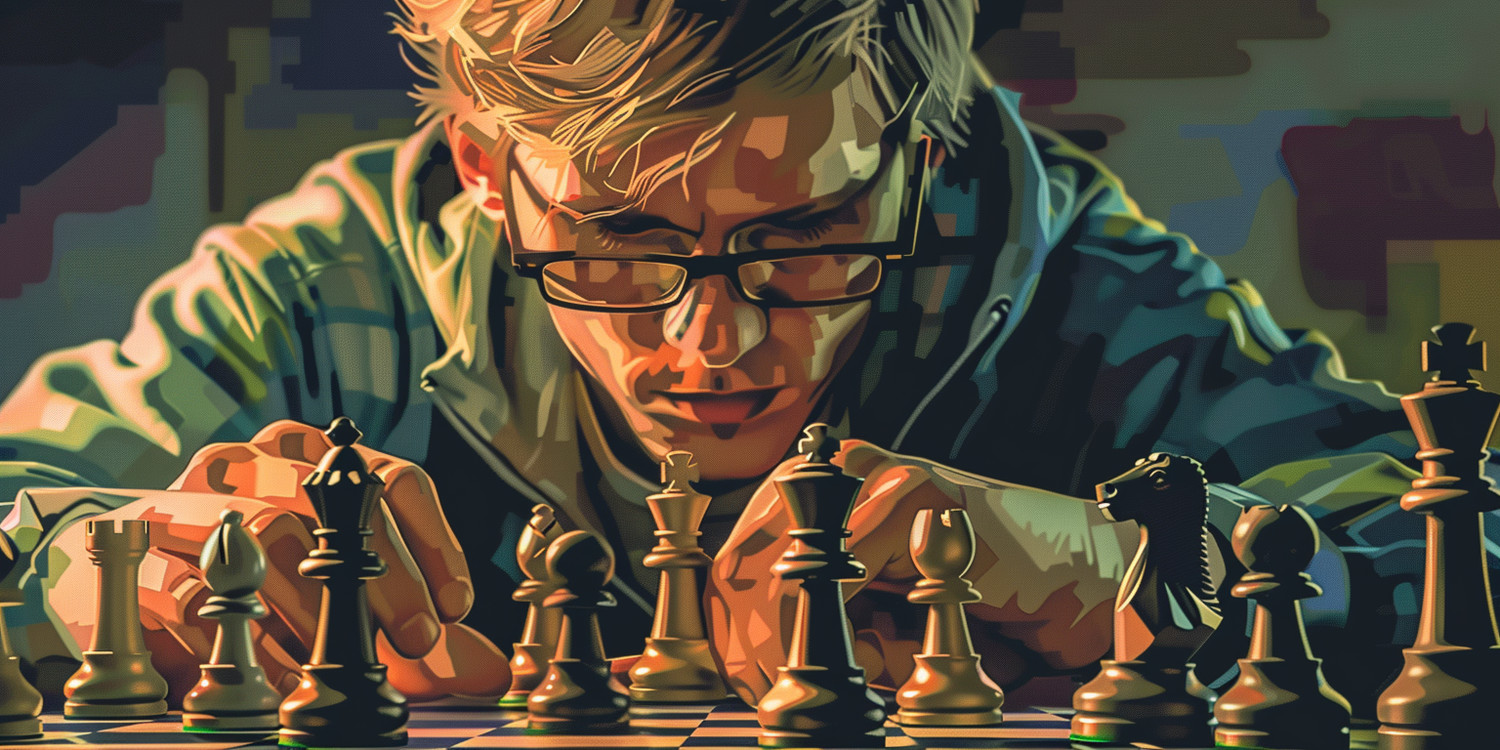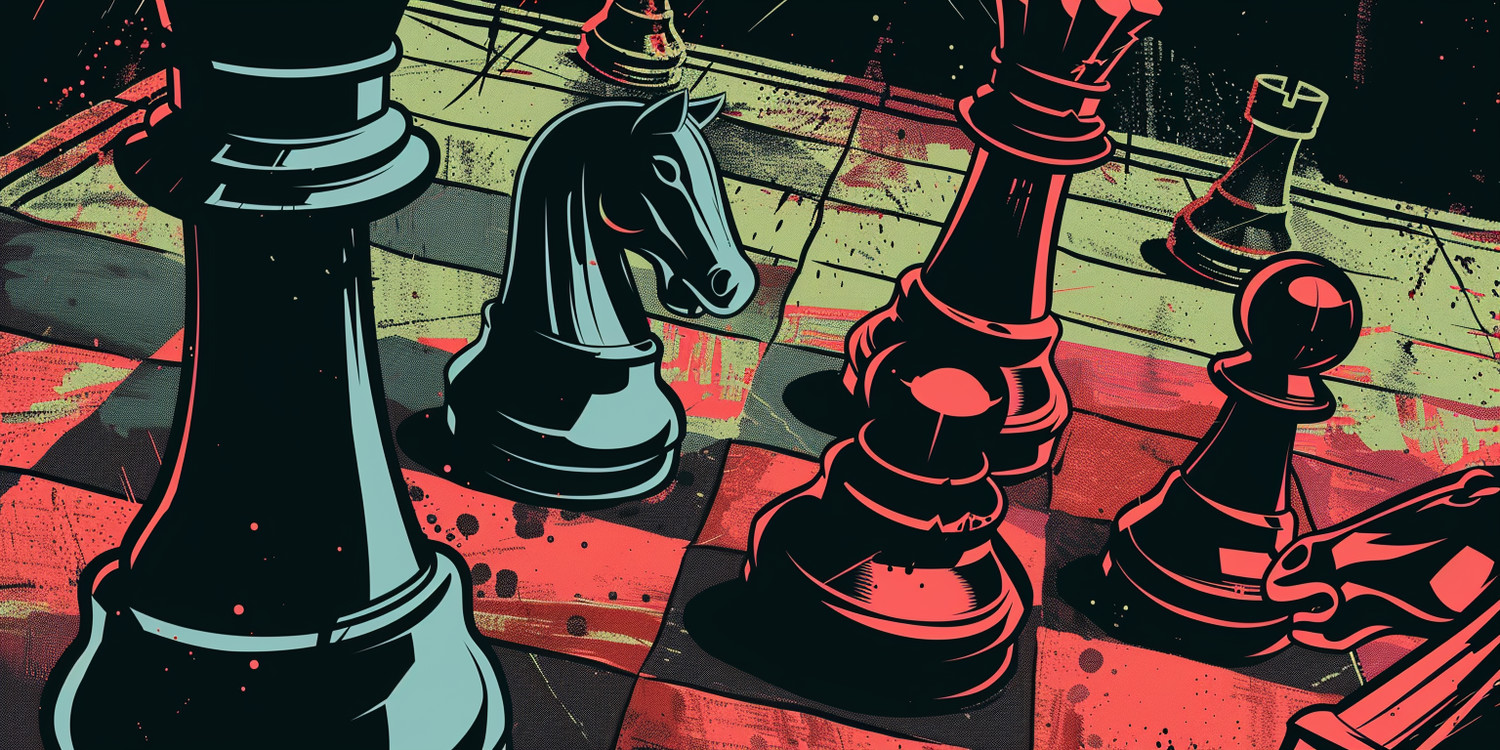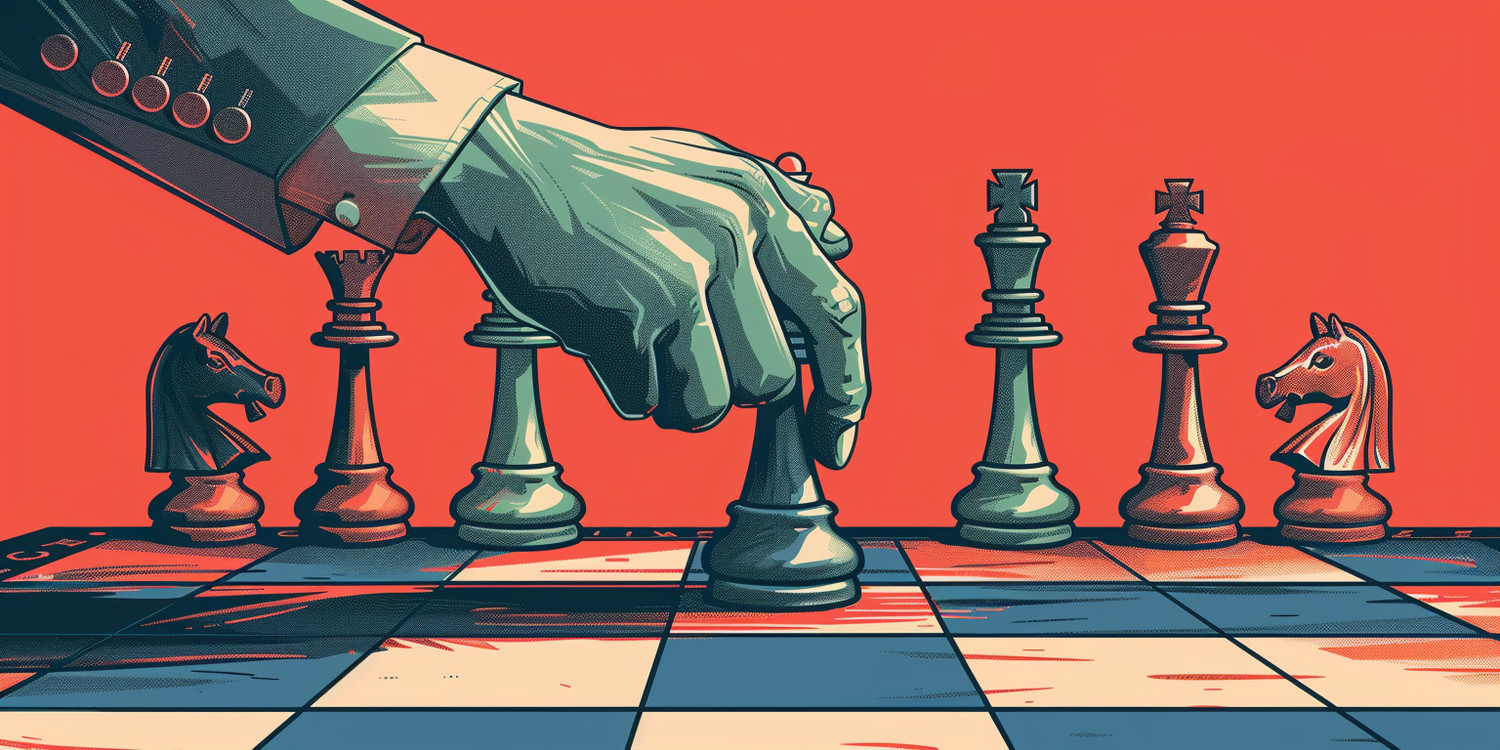
Before delving into advanced strategic considerations, it is imperative to establish a robust foundation in the rudiments of chess. Comprehending the fundamental stipulations, piece motility, and chessboard configuration is critically important for all participants, irrespective of skill.
Mastering Piece Movements and Rules
A comprehensive understanding of piece movements constitutes a cornerstone of chess proficiency. Each piece possesses a unique method of locomotion across the board, dictating its strategic value and tactical applications. The Pawn, for instance, advances one square linearly, but captures diagonally. The Rook traverses any number of unoccupied squares horizontally or vertically. The Knight, unique in its “L-shaped” trajectory, leaps over intervening pieces, rendering it particularly adept at navigating congested positions. The Bishop commands diagonal pathways, its influence extending across squares of a single color. The Queen, the most potent piece, combines the Rook’s and Bishop’s capabilities, traversing any number of unoccupied squares horizontally, vertically, or diagonally. Finally, the King, while limited to one square in any direction, is paramount to the game’s objective: checkmate. Mastery of these individual movements is crucial for effective piece coordination and strategic planning. Familiarizing oneself with special rules, such as en passant pawn capture and castling (a maneuver involving the King and either Rook), further enhances one’s tactical repertoire. Castling safeguards the King and activates a Rook, typically executed early in the game. En passant, a less frequent occurrence, allows a pawn to capture an opponent’s pawn that has advanced two squares from its starting rank, as if it had moved only one square. A thorough grasp of these rules, coupled with diligent practice, forms the bedrock upon which advanced chess skills are built, enabling players to navigate the complexities of the game with precision and strategic foresight. Ignoring these fundamental aspects will invariably hinder progress and limit one’s potential for chess mastery. Therefore, dedicated study and practical application of piece movements and rules are indispensable for any aspiring chess player seeking to elevate their game from novice to professional level.
The Significance of Chess Openings

The opening phase of a chess game holds paramount significance, establishing the foundational structure upon which subsequent strategic and tactical maneuvers are predicated. A well-executed opening sequence serves as a catalyst for optimal piece development, control of pivotal squares (particularly those in the center of the board), and the proactive creation of early threats against the adversary’s position. Neglecting the principles of sound opening play can lead to positional disadvantages that are difficult, if not impossible, to rectify as the game progresses. The primary objective during the opening is to mobilize one’s forces expeditiously and harmoniously, bringing pieces into active participation and contesting control of the central zone. Central control exerts a profound influence on the board, affording greater mobility and facilitating tactical operations throughout the middlegame. Furthermore, a judicious opening strategy aims to secure the safety of the King, often achieved through castling, thereby mitigating the risk of premature attacks. Efficient piece development entails avoiding the premature movement of the Queen, which can become a target for harassment by minor pieces, and prioritizing the activation of Knights and Bishops. Sound opening principles also discourage pawn moves that create weaknesses or obstruct the development of other pieces. Understanding the nuances of various opening systems, such as the Ruy Lopez, Sicilian Defense, Queen’s Gambit, and French Defense, provides a strategic framework for navigating diverse game scenarios. Each opening possesses inherent strengths and weaknesses, demanding a thorough comprehension of its characteristic pawn structures, tactical motifs, and strategic objectives. Mastering the art of chess openings is therefore an indispensable component of chess proficiency, enabling players to gain a competitive edge from the outset and lay the groundwork for a successful middlegame and endgame.
Popular Openings and Strategic Advantages
A deep understanding of popular chess openings is crucial for gaining strategic advantages from the very beginning of a game. Each opening carries its unique set of strategic ideas, pawn structures, and tactical possibilities, providing players with a diverse toolkit to navigate various situations. The Ruy Lopez, also known as the Spanish Opening, is a classical choice for White, aiming for long-term positional advantages and control of the center. Its main strategic idea involves putting pressure on Black’s e-pawn and developing a harmonious piece placement. The Sicilian Defense, the most popular response to 1.e4, is a sharp and dynamic opening that often leads to unbalanced positions. Black willingly accepts a slightly weaker pawn structure in exchange for active piece play and counterattacking chances. The French Defense is a solid and reliable choice for Black, characterized by a closed pawn structure and strategic maneuvering. Black aims to undermine White’s center and create counterplay on the queenside. The Queen’s Gambit, initiated by 1.d4, is a positional opening where White offers a pawn to gain control of the center and develop a strong initiative. Accepting the gambit can lead to a solid position for Black, while declining often results in a more complex and tactical game. Furthermore, understanding the Italian Game, with its emphasis on rapid development and open positions, and the Caro-Kann Defense, known for its solidity and flexibility, is essential. Exploring less common but strategically sound openings such as the English Opening and the Reti Opening can also provide a surprise element and force opponents out of their comfort zones. Analyzing grandmaster games featuring these openings is invaluable for understanding the strategic nuances and tactical patterns associated with each. Platforms like Chessiverse offer resources to practice these openings against chess bots, allowing players to deepen their understanding and improve their practical application.
Tactics in the Middle Game: Exploiting Opportunities

The middlegame in chess represents the crucible where strategic planning coalesces with tactical execution. It is within this phase that nascent advantages, cultivated during the opening, are either amplified or squandered. A keen awareness of tactical motifs and the capacity to identify and exploit fleeting opportunities are paramount for success. Tactics, in essence, are short-term, forceful sequences of moves designed to achieve a concrete gain, be it material advantage, improved positional structure, or direct attacks against the opponent’s King. Mastery of tactics necessitates a proactive mindset, constantly scanning the board for potential vulnerabilities and combinations. The ability to calculate variations accurately and assess their consequences is a critical skill. Central to tactical proficiency is the recognition of common tactical patterns, such as forks, pins, skewers, discovered attacks, and sacrifices. A fork involves a single piece simultaneously attacking two or more enemy pieces, often leading to material gain. A pin restricts the movement of a piece by placing it on a line between an attacking piece and a more valuable piece (or the King). A skewer is similar to a pin, but the more valuable piece is directly attacked, forcing it to move and exposing the less valuable piece behind it. A discovered attack occurs when the movement of one piece uncovers an attack by another piece along a line or diagonal. Sacrifices, whether material or positional, are often employed to disrupt the opponent’s defenses, create attacking opportunities, or gain a decisive advantage in the endgame. Regular practice of tactical puzzles is essential for honing one’s tactical acumen. Online platforms such as Chessiverse provide a vast repository of tactical exercises, allowing players to reinforce their pattern recognition and calculation skills. Furthermore, analyzing one’s own games and identifying missed tactical opportunities is a valuable learning process.
Common Tactical Motifs: Forks, Pins, Skewers
Proficiency in chess tactics hinges on recognizing and exploiting recurring tactical motifs that frequently arise during gameplay. Among the most prevalent and potent of these are forks, pins, and skewers. A fork is a tactical maneuver wherein a single piece simultaneously attacks two or more opponent’s pieces, thereby creating a situation where the opponent can only defend against one threat, resulting in material gain or a significant positional advantage. Knights are particularly adept at executing forks due to their unique movement pattern, which allows them to bypass intervening pieces. However, other pieces, such as queens and pawns, can also deliver effective forks. Recognizing potential fork opportunities requires careful assessment of piece placement and potential lines of attack. A pin occurs when a piece is positioned on a line between an attacking piece and a more valuable piece (or the king). The pinned piece is restricted in its movement, as moving it would expose the more valuable piece to capture or attack. Pins can be absolute (when the king is behind the pinned piece, making it illegal to move) or relative (when a piece other than the king is behind the pinned piece). Exploiting a pin often involves attacking the pinned piece to further restrict the opponent’s options. A skewer is similar to a pin, but the more valuable piece is directly attacked, forcing it to move and exposing the less valuable piece behind it to capture. Skewers can be particularly devastating, as they often lead to immediate material gain. Distinguishing between pins and skewers is crucial for effective tactical calculation. Mastering these tactical motifs requires consistent practice and pattern recognition. Utilizing online resources and tactical puzzles, such as those found on Chessiverse, can significantly enhance one’s ability to identify and execute these tactical maneuvers during actual games.
Endgame Principles: Converting Advantages

The endgame in chess represents the final phase of the game, where strategic precision and technical accuracy are paramount for converting accumulated advantages into a decisive victory or salvaging a draw from a precarious position. As the number of pieces on the board diminishes, the relative value of each remaining piece increases, and subtle nuances in pawn structure and king activity can exert a profound influence on the outcome. Mastering endgame principles is therefore an indispensable skill for any aspiring chess player seeking to elevate their game. Key endgame principles include: King Activity: In the endgame, the king transforms from a vulnerable target into an active fighting piece. Activating the king to support pawn advances, control key squares, and harass the opponent’s pieces is often crucial for success. Pawn Structure: The pawn structure assumes even greater importance in the endgame, as pawn weaknesses, such as isolated pawns, doubled pawns, and backward pawns, can become decisive liabilities. Conversely, passed pawns, which are pawns that have no opposing pawns to prevent their advance to promotion, can become game-winning assets. Opposition: The concept of opposition refers to the relative positioning of the kings, where the player who controls the key squares between the kings often gains a strategic advantage. Triangulation: Triangulation is a technique used to gain the opposition by maneuvering the king in a triangular pattern, forcing the opponent’s king to move and ceding control of key squares. Rook Endgames: Rook endgames are among the most common and complex endgames, requiring a thorough understanding of rook activity, pawn structure, and the principles of active and passive defense. Minor Piece Endgames: Minor piece endgames, involving bishops and knights, often hinge on the specific characteristics of the position, such as the presence of good or bad bishops, the control of key squares, and the ability to create passed pawns. Practicing endgame scenarios with chess engines and studying classic endgame positions are essential for developing endgame proficiency. Chessiverse offers resources to practice endgames against chess bots, allowing players to refine their technique and deepen their understanding of key endgame principles.
Analyzing Your Games: Learning from Mistakes
A cornerstone of chess improvement lies in the meticulous analysis of one’s own games, transforming defeats and suboptimal decisions into invaluable learning experiences. Post-game analysis transcends mere review; it is a systematic process of dissecting each move, identifying critical junctures, and understanding the underlying rationale behind successes and failures. This process necessitates objectivity and a willingness to confront one’s shortcomings. The initial step involves replaying the game, preferably without the immediate pressure of competition, to allow for a more detached and contemplative assessment. Utilizing a chess engine can provide objective evaluations of each move, highlighting inaccuracies, missed opportunities, and tactical blunders. However, relying solely on engine evaluations is insufficient; it is crucial to understand the “why” behind the engine’s recommendations. Identifying the specific strategic or tactical factors that contributed to a suboptimal move is paramount. Did a miscalculation lead to material loss? Was a crucial strategic principle overlooked? Did a lack of pattern recognition result in a missed tactical opportunity? Analyzing games should focus not only on identifying mistakes but also on understanding the thought process that led to those mistakes. This involves reconstructing the decision-making process at critical moments, considering alternative moves, and evaluating their potential consequences. Furthermore, analyzing games played with different openings can reveal weaknesses in one’s opening repertoire and inform future preparation. Paying close attention to the middlegame transitions and endgame technique can also highlight areas for improvement. Maintaining a detailed record of analyzed games, including annotations and notes on key lessons learned, can serve as a valuable resource for future reference. The ultimate goal of game analysis is to develop a deeper understanding of chess principles, improve decision-making skills, and avoid repeating the same mistakes in future games. Chessiverse offers tools for game analysis, allowing players to annotate their games, utilize chess engines, and track their progress over time.
Studying Grandmaster Games: Advanced Strategies

The study of grandmaster games constitutes an indispensable component of advanced chess education, providing a profound understanding of strategic nuances, tactical complexities, and the intricate interplay between positional considerations and concrete calculations. Grandmasters, through years of dedicated study and practical experience, have honed their chess skills to an exceptional level, and their games serve as invaluable repositories of chess knowledge. Analyzing grandmaster games transcends mere observation; it requires active engagement with the game, attempting to understand the rationale behind each move, anticipating potential plans, and evaluating the consequences of alternative lines. Focusing on specific aspects of the game, such as opening preparation, middlegame strategy, or endgame technique, can provide targeted insights and accelerate learning. Studying games featuring different openings can broaden one’s opening repertoire and deepen one’s understanding of various pawn structures and strategic themes. Analyzing middlegame positions can reveal advanced tactical motifs, strategic planning techniques, and the ability to convert subtle advantages into decisive victories. Examining endgame positions can enhance one’s understanding of endgame principles, such as king activity, pawn structure, and the importance of accurate calculation. Beyond individual moves, it is crucial to understand the overall strategic plan and the underlying positional considerations that guided the grandmaster’s decisions. Identifying key turning points in the game and analyzing the critical variations can provide valuable insights into the decision-making process. Studying the games of different grandmasters can also expose one to diverse playing styles and strategic approaches. Analyzing the games of positional masters, such as Tigran Petrosian, can enhance one’s understanding of prophylaxis and strategic maneuvering. Studying the games of tactical geniuses, such as Mikhail Tal, can sharpen one’s tactical vision and calculation skills. Chessiverse provides access to a vast database of grandmaster games, allowing players to study and analyze these games using advanced analytical tools.
Leveraging Technology: Chess Engines and Online Platforms
In the contemporary era, technology has emerged as an indispensable tool for chess improvement, revolutionizing the way players learn, analyze, and practice the game. Chess engines, sophisticated software programs capable of evaluating chess positions with remarkable accuracy, have become invaluable training partners and analytical resources. Online platforms, such as Chessiverse, Lichess, and Chess.com, offer a plethora of resources, including interactive lessons, tactical puzzles, game analysis tools, and opportunities to play against opponents of varying skill levels from around the world. Chess engines can be utilized to analyze one’s own games, identify inaccuracies and missed opportunities, and explore alternative lines. By comparing one’s own moves with the engine’s recommendations, players can gain a deeper understanding of chess principles and improve their decision-making skills. Chess engines can also be used to prepare for upcoming games by analyzing the opponent’s playing style and identifying potential weaknesses. Furthermore, chess engines can be used to explore new openings and variations, providing a comprehensive analysis of the resulting positions. Online platforms offer a wide range of resources for chess improvement, including interactive lessons on various aspects of the game, tactical puzzles designed to sharpen tactical vision, and game analysis tools that allow players to annotate their games and utilize chess engines. These platforms also provide opportunities to play against opponents of varying skill levels, allowing players to test their skills and gain practical experience. Chessiverse, in particular, offers a unique feature: the ability to play against chess bots that mimic the playing styles of famous grandmasters, providing a realistic and challenging training experience. The integration of technology into chess training has democratized access to chess knowledge, empowering players of all skill levels to improve their game and reach their full potential. By leveraging the power of chess engines and online platforms, aspiring chess players can accelerate their learning, refine their skills, and achieve chess mastery.
Community Engagement: Chess Clubs and Tournaments

Active engagement within the chess community, through participation in chess clubs and tournaments, represents a crucial catalyst for accelerating chess improvement and fostering a deeper appreciation for the game. Chess clubs provide a supportive and collaborative environment where players of varying skill levels can congregate to share their passion for chess, exchange knowledge, and engage in friendly competition. Regular participation in chess club activities offers numerous benefits, including opportunities to play against diverse opponents, analyze games with experienced players, and receive personalized guidance and mentorship. Chess clubs often organize lectures, workshops, and tournaments, providing structured learning opportunities and fostering a sense of camaraderie among members. Tournaments, whether local, regional, or online, provide a competitive platform for testing one’s chess skills against a wider range of opponents. Participating in tournaments offers valuable experience in managing time pressure, coping with pre-game jitters, and adapting to different playing styles. Analyzing tournament games, both wins and losses, can provide valuable insights into one’s strengths and weaknesses, informing future training efforts. Furthermore, tournaments offer opportunities to earn ratings, which serve as a benchmark for measuring progress and comparing one’s skill level against other players. Engaging with the chess community also extends beyond chess clubs and tournaments. Online chess forums and social media groups provide platforms for connecting with chess enthusiasts from around the world, sharing ideas, discussing games, and seeking advice. Participating in online chess communities can broaden one’s perspective on the game and foster a sense of belonging within the global chess community. The social aspect of chess, often overlooked, is an integral component of chess improvement. Engaging with other players, sharing experiences, and learning from their perspectives can enhance one’s understanding of the game and foster a lifelong love of chess. Chessiverse and other online platforms facilitate community engagement through forums, chat rooms, and team tournaments.

